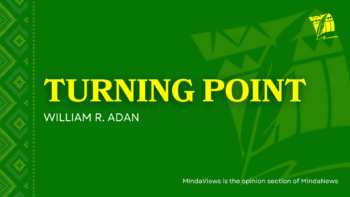SURIGAO CITY (MindaNews/28 Feb) — Local officials affected by the planned streamlining of membership to three mining committees for environment and social development programs have appealed to the Mines and Geosciences Bureau (MGB) to reconsider the order.
Engr. Reynaldo Y. Gonzales, chief of the Mining Environment and Safety Division (MESD) said mayors voiced strong opposition to the special order issued by Caraga mines regional director Roger de Dios late last year but discussed at a two-day seminar only on February 21 and 22.
“They are now appealing to the director,” Gonzales said.
De Dios’ memorandum prohibited a local government unit from being represented in more than one of the following committees: Community Technical Working Group (CTWG), Mine Rehabilitation Fund Committee (MRFC) and the Multipartite Monitoring Team (MMT).
He explained that this was meant “to implement what the law has provided” and ensure check and balance in the prioritization of livelihood projects for the communities.
“We found out that local representatives are sitting in two to three of these committees. How can we ensure there is check and balance if a member in one committee also becomes a member of the MRFC or the MMT? Or vice versa,” he said.
In the two-day seminar, Taganaan town mayor Cesar Diaz objected to the removal of the town representative in the MMT. The objection was seconded by Tubod mayor Cristina Hemady Romarate-Arcillas.
Both mayors asserted that the removal is untimely since barangay officials are “not capacitated” and still need to be taught on technical monitoring work.
On February 22, the mayors were given an orientation on the ‘changes’ of the Social Development and Management Program (SDMP) which required that livelihood component be allotted 20% of the 75% budget for SDMP.
Under the Philippine Mining Act of 1995, operating mines are required to allot 1.5% of their operating cost to social development projects. The law’s implementing rules and regulations also defined the composition of the MRFC and the MMT.
The members of the CTWG, the body that creates the Annual SDMP. was also streamlined, prompting complaints from barangay captains.
“We are not agreeing to this. We like it that there were many of us in the committee because at least a lot of us can explain to the people about what mining is,” Urbiztondo barangay captain Carmelito Galing said.
Galing had earlier said that reducing the CTWG membership to five members from the previous membership of 10 to 15, defeats the purpose of the concept started in 1999.
Gonzales said the CTWG was created for the purpose of uplifting the lives of the communities and not to serve the interests of the LGUs.
“This (CTWG) is strictly practiced in the region because this is where it started. The law did not write this but (it was) an initiative of the regional office,” he added.
Created in 1999, the SDMP was a result of “the nagging negative impression that mining is an environment and community despoiler” and the CTWG was created to “empower the people.”
But industry observers, including mining executives and MGB officials, have criticized the SDMP and the CTWG for allegedly not serving their purpose.
De dios said the SDMP focused on infrastructure projects and sidelined the livelihood initiatives to uplift the economic conditions of the host and affected communities.
MGB records show that in the last 13 years, infrastructure projects were allocated a total of P103.099 million while livelihood was only P65.097 million.
Gonzales said it also became a venue for some local officials claiming the project as theirs.
Gonzales said he did not mince words when he told local officials that no other private entity, not even the mobile phone companies raking in millions of profit, has shelled millions of pesos for social development projects, except the mining industry.
He also showed them a comparative figure on the taxes generated from mining companies which were returned to local government coffers thru its Internal Revenue Allotment (IRA).
Aside from the IRA, LGUs also earn from occupational taxes and real property taxes.
“You cannot say the (mining) communities are ‘luoy’ (pitiful) because the money is there. They were all silent when I showed them the figures,” he said.
He said the SDMP is private money and not public funds.
“We always get feedback that the industry is not giving anything to the community but we have the figures that millions have been infused for community development. The question is where is this money and how was it used?” he asked.
“The SDMP is there to co-with the barangay’s existing AIP (Annual Investment Priority). There is already the BDP (Barangay Development Plan) where government’s IRA is used.
The SDMP will just fill in that gap,” he said.
Gonzales also said barangays will retain its membership with the CTWG and MMT but cannot sit down with the Mine Rehabilitation Fund Committee (MRFC) since it will be represented by municipal and provincial heads.
The MRFC is the highest body to approve and endorse the SDMP that the CTWG will create.
The MMT on one hand is designated by the MRFC for the regular monitoring of environmental issues and concerns.
The MGB director issues the certificate of approval for the SDMP.
The MRFC has yet to meet for the first quarter of this year to discuss the issue. (Vanessa Almeda/MindaNews)
